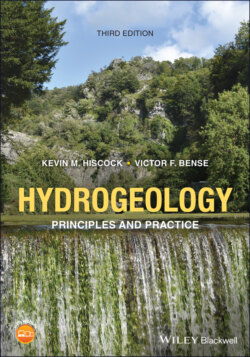Читать книгу Hydrogeology - Kevin M. Hiscock - Страница 29
1.5.5 Human influence on the water cycle
ОглавлениеAlthough rarely depicted in diagrams of the water cycle, human activity alters the water cycle in three distinct, but inter‐related ways (Abbott et al. 2019). First, humans appropriate water through: (1) livestock, crop and forestry use of soil moisture that eventually flows back to the atmosphere as evapotranspiration (so‐called ‘green water’ use with an estimated flux of 15–22 × 103 km3 a−1); (2) as surface water and groundwater abstraction (‘blue water’ use with an estimated flux of 3.8–6.0 × 103 km3 a−1); and (3) as water required to assimilate pollution (‘grey water’ use with an estimated flux of 1.0–2.0 × 103 km3 a−1) (Abbott et al. 2019; Schyns et al. 2019). Second, humans have disturbed approximately three‐quarters of the Earth's ice‐free land surface through activities that include agriculture, deforestation and wetland destruction (Ellis et al. 2010). These disturbances alter evapotranspiration, groundwater recharge, river discharge and precipitation at continental scales (Falkenmark et al. 2019). Third, climate change is disrupting patterns of water flow and storage at local to global scales (Haddeland et al. 2014). These human interferences with the water cycle have created problems for billions of individuals and many ecosystems worldwide. The estimates of human green, blue and grey water use (about 24 × 103 km3 a−1) indicates that human freshwater appropriation redistributes the equivalent of half of global river discharge or double global groundwater recharge each year (Abbott et al. 2019).
